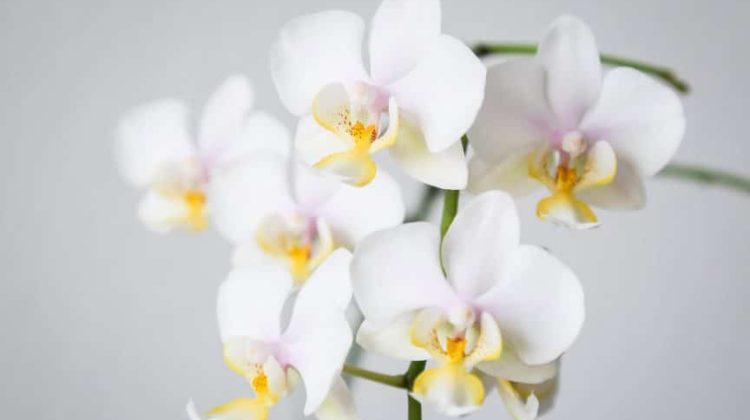
Phalaenopsis orchids, also known as moth orchids, are a popular houseplant choice due to their stunning blooms and relatively easy care.
These orchids are native to Southeast Asia and can be found in a variety of colors, including white, pink, yellow, and purple.
While they may seem delicate, with proper care, phalaenopsis orchids can thrive and bloom for months on end.
One of the key factors in successfully caring for phalaenopsis orchids is providing the right temperature and lighting conditions.
These orchids prefer temperatures between 63 and 84 °F (17 to 29 °C), with a slightly cooler temperature at night. They also require bright, indirect light, making an east-facing window an ideal location for them.
However, direct sunlight can scorch their leaves, so it’s important to avoid placing them in direct sunlight.
Another important aspect of phalaenopsis orchid care is watering and fertilizing. These orchids should be watered when the potting mix is nearly dry, and excess water should be allowed to drain away.
Overwatering can lead to root rot, which can be fatal to the plant.
Fertilizing should be done regularly, but at a lower concentration than other plants, as phalaenopsis orchids have relatively slow growth rates. With proper care, these beautiful plants can be enjoyed for years to come.
In this article, we'll cover
1. Understanding Phalaenopsis Orchid
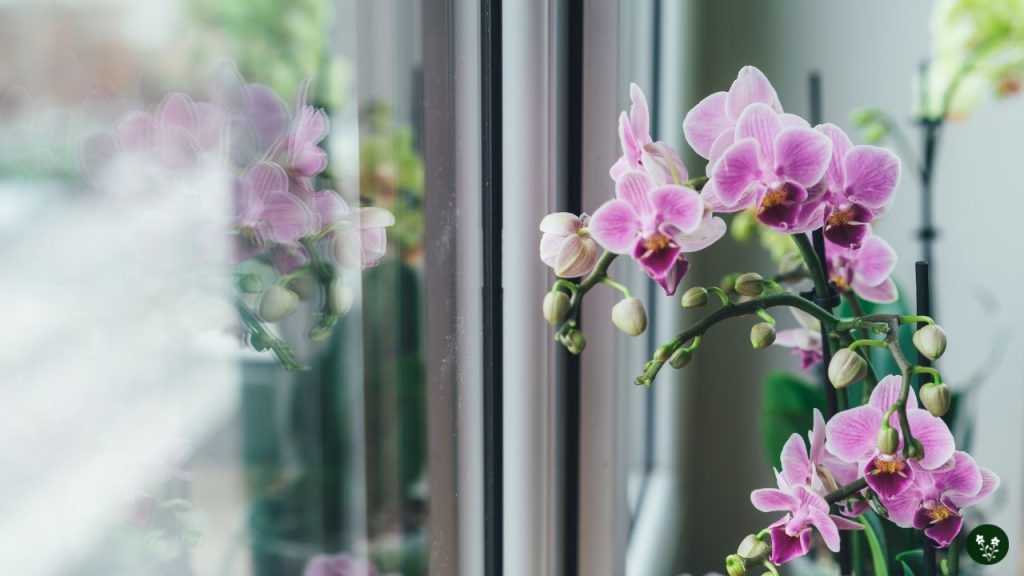
Species and Hybrids
Phalaenopsis orchids, also known as moth orchids, are a genus of flowering plants that belong to the orchid family. They are native to Southeast Asia, specifically the Philippines, Indonesia, and Papua New Guinea.
There are over 60 species of Phalaenopsis orchids, each with its own unique characteristics. In addition to the species, there are also countless hybrids created by crossing different species.
Hybridization has resulted in a wide range of colors, shapes, and sizes, making Phalaenopsis orchids a popular choice among orchid enthusiasts.
Natural Habitat
Phalaenopsis orchids are epiphytes, meaning they grow on other plants rather than in soil. In their natural habitat, they can be found growing on the trunks and branches of trees, where they receive filtered light and high humidity.
They have thick, fleshy roots that absorb moisture and nutrients from the air and rain. Because of their epiphytic nature, Phalaenopsis orchids do not require soil to grow and can be grown in a variety of potting media, such as bark, sphagnum moss, or coconut husk chips.
Phalaenopsis orchids are also known for their ability to adapt to a wide range of temperatures. In their natural habitat, they can experience temperatures ranging from 50°F (10°C) at night to 90°F (32°C) during the day.
This adaptability makes them a great choice for indoor cultivation, as they can thrive in the typical household temperature range of 65-85°F (18-29°C).
Overall, understanding the basic characteristics and natural habitat of Phalaenopsis orchids is important for providing proper care and ensuring their health and longevity.
2. Watering and Humidity
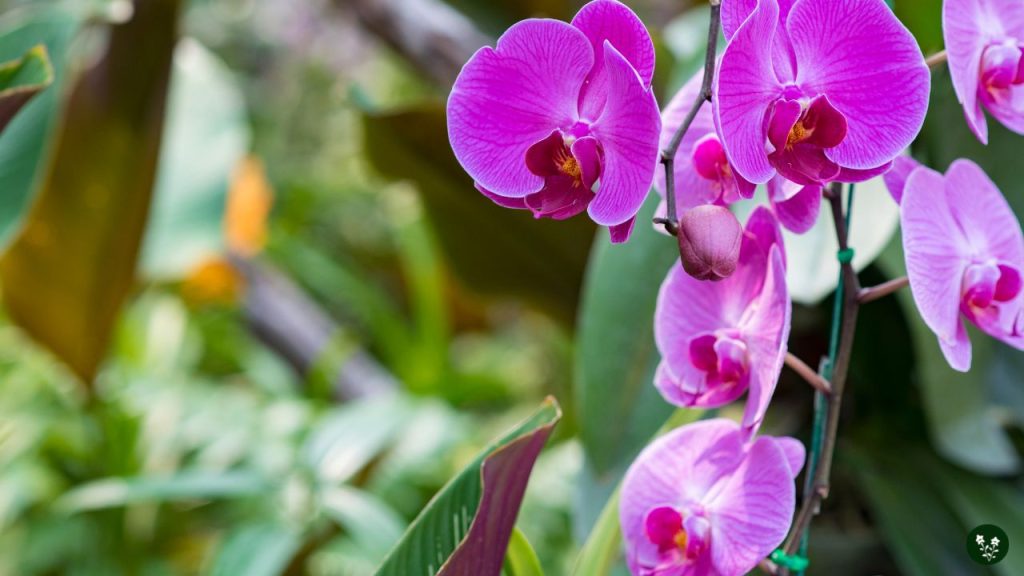
How to Properly Water Indoor Orchids
Phalaenopsis orchids require proper watering to thrive, and it is important to avoid overwatering or underwatering.
Overwatering can lead to root rot, while underwatering can cause the plant to dry out and die. Here are some tips for watering your indoor orchids:
- Water your orchid once a week, or when the potting mix feels dry to the touch.
- Use room temperature water, and avoid using softened or distilled water, as they can be too alkaline for the orchid.
- Take the orchid to the sink and run water over the bark, turning the pot several times, so water gets to all the areas inside the pot. Keep the water running until it flows out the bottom of the pot.
- Let it drain a bit, then repeat the process. You can keep the water running, but that’s a lot of water that is wasted.
- Avoid getting water on the leaves or flowers, as this can cause damage or disease.
Optimal Humidity Range for Phalaenopsis Orchids
Phalaenopsis orchids require a high level of humidity to thrive, but it is important to avoid excessive humidity, which can lead to fungal growth or rot.
Here are some tips for maintaining the optimal humidity range for your orchids:
- Most epiphytic tropical orchids are from humid areas, often thriving in 50% to 90% humidity.
- For indoor growers, relative humidity is probably the most difficult factor to control as humidity levels in homes tend to be quite low, especially when homes are heated in winter.
- Try to aim for a humidity of 50% for your phalaenopsis orchids.
- Good airflow and fast-draining soil will help reduce the risk of rot and fungus.
- You can increase humidity by placing a humidifier near the orchids, or by placing a tray filled with water and pebbles near the plants. As the water evaporates, it will increase the humidity around the plants.
3. Light and Temperature
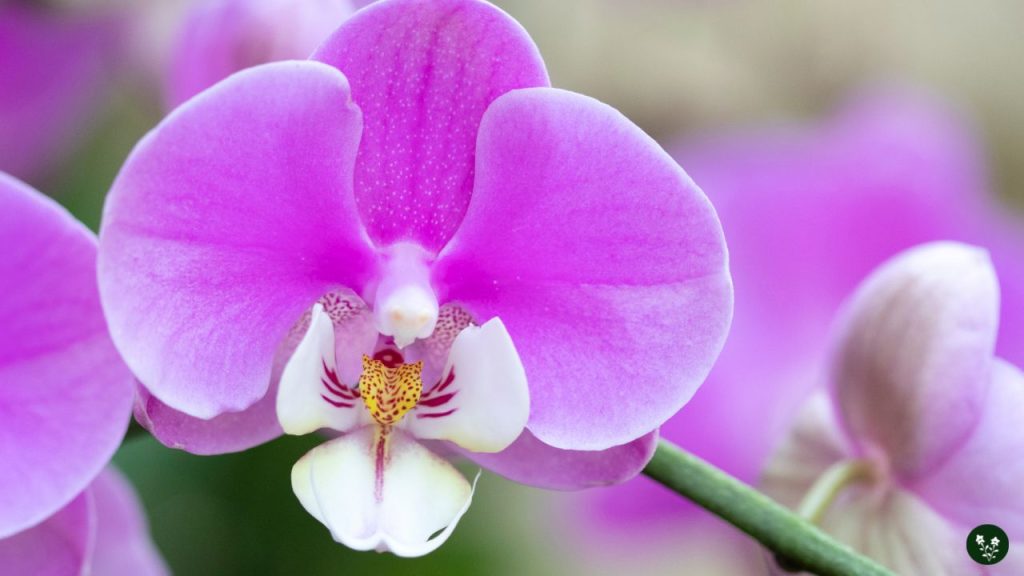
Optimal lighting conditions for Phalaenopsis Orchids
Phalaenopsis orchids are low-light orchids, meaning they do not require direct sunlight to grow and thrive. In fact, too much direct sunlight can be harmful to these delicate plants.
Instead, they prefer bright, indirect light. Placing your Phalaenopsis orchid near an east-facing window is an excellent option, as it will receive bright, indirect light for most of the day.
Shaded south or west-facing windows are also suitable, as long as the plant is not exposed to direct sunlight.
If you do not have access to natural light, Phalaenopsis orchids can also grow and bloom under full-spectrum grow lights.
These lights mimic natural sunlight and provide the necessary light spectrum for the plant’s growth and development.
How to maintain proper temperature for indoor orchids
Phalaenopsis orchids thrive in temperatures between 75-85°F during the day and above 60°F at night.
Higher temperatures can force faster vegetative growth, but higher humidity and air movement must accompany higher temperatures, with the recommended maximum being 90 to 95°F.
Night temperatures to 55°F are desirable for these orchids.
To maintain the optimal temperature for your Phalaenopsis orchid, it is essential to keep it away from cold drafts and air conditioning vents, which can cause temperature fluctuations and harm the plant.
It is also important to provide adequate humidity levels, as dry air can cause stress and damage to the plant. You can increase humidity levels by placing a tray of water near the plant or by using a humidifier.
By providing the right lighting conditions and maintaining proper temperature, you can ensure that your Phalaenopsis orchid thrives and blooms beautifully.
4. Potting and Repotting
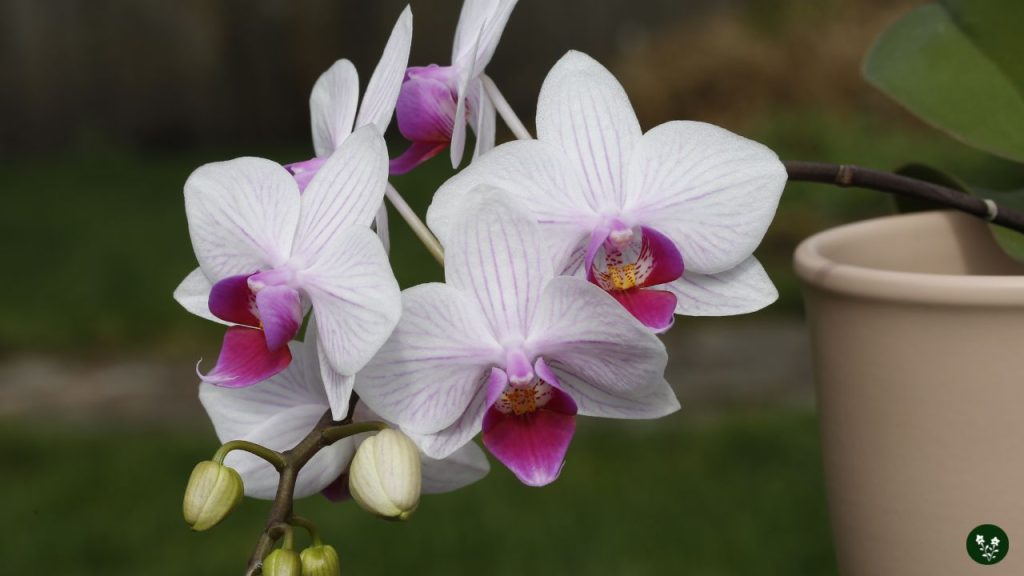
Optimal Potting Mix Type and Ingredients for Phalaenopsis Orchids
Phalaenopsis orchids require a porous potting mix that allows for good drainage and aeration. The mix should be able to retain moisture without becoming waterlogged, as root rot can occur in soggy conditions.
An ideal mix for Phalaenopsis orchids is one that is composed of a combination of fir bark, sphagnum moss, and perlite or charcoal.
Fir bark provides good drainage and aeration, while sphagnum moss helps to retain moisture. Perlite or charcoal can be added to improve drainage and prevent the mix from becoming too compact.
Some orchid growers also add coconut coir or tree fern fiber to the mix, which can help to retain moisture and provide additional nutrients.
Signs That a Phalaenopsis Orchid Needs Repotting
Phalaenopsis orchids should be repotted every one to three years, depending on their growth rate and the condition of the potting mix.
Signs that a Phalaenopsis orchid needs repotting include:
- The potting mix has become compact and soil-like
- The orchid has outgrown its current pot and is becoming root-bound
- The lower leaves have died, making the plant too leggy and the stem weak
- The roots are growing out of the drainage holes in the pot
If any of these signs are present, it is time to repot the Phalaenopsis orchid. Repotting should be done in the spring, immediately after flowering, using a fresh potting mix.
Care should be taken not to damage the orchid’s delicate roots during the repotting process.
5. Fertilizing and Feeding
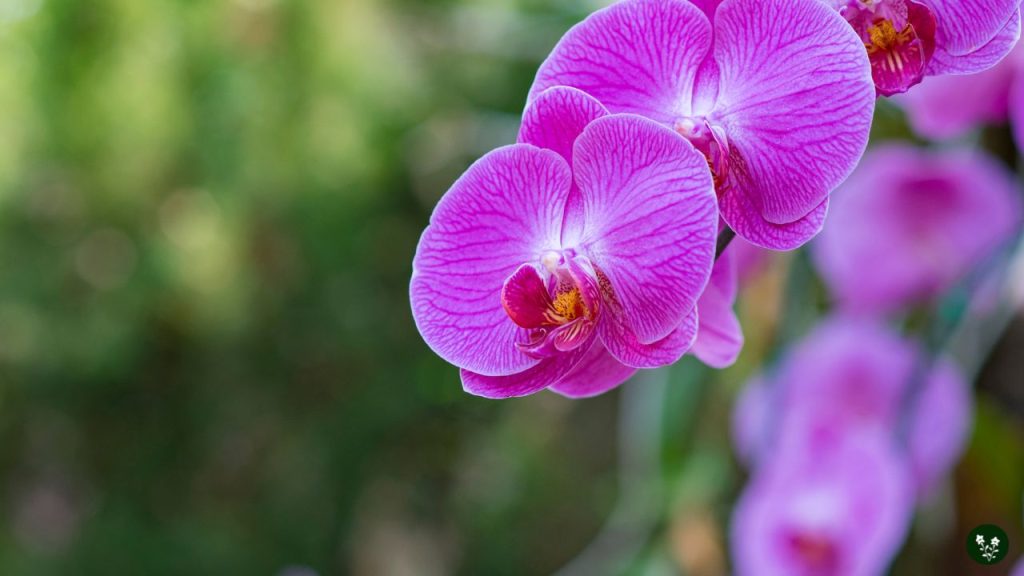
Optimal Fertilizer Type and Frequency for Phalaenopsis Orchids
Phalaenopsis orchids require a balanced fertilizer that contains nitrogen (N), phosphorus (P), and potassium (K). The recommended N-P-K ratio for Phalaenopsis orchids is 3-1-2 or 3-2-1.
You can choose between organic or synthetic fertilizers, but make sure you follow the instructions on the label to avoid over-fertilizing your orchid.
During the growing season, which is usually from spring to fall, fertilize your Phalaenopsis orchid every 1 to 2 weeks. During the winter, when the orchid is in a dormant phase, fertilize it every 3 to 4 weeks.
Over-fertilizing can lead to root burn, which can damage your orchid.
Feeding Schedule
When fertilizing your Phalaenopsis orchid, make sure you water it first to avoid burning the roots. You can use a liquid or water-soluble fertilizer and mix it with water according to the instructions on the label.
Alternatively, you can use slow-release fertilizer pellets that release nutrients over time.
It’s also important to flush the pot with plain water every 4 to 6 weeks to remove any excess fertilizer salts that may have accumulated in the potting mix.
This will prevent root burn and ensure that your orchid is getting the right amount of nutrients.
Remember that fertilizing your Phalaenopsis orchid is just one part of its care routine. Make sure you provide it with the right amount of light, water, and humidity to ensure its overall health and well-being.
6. Pest and Disease Control
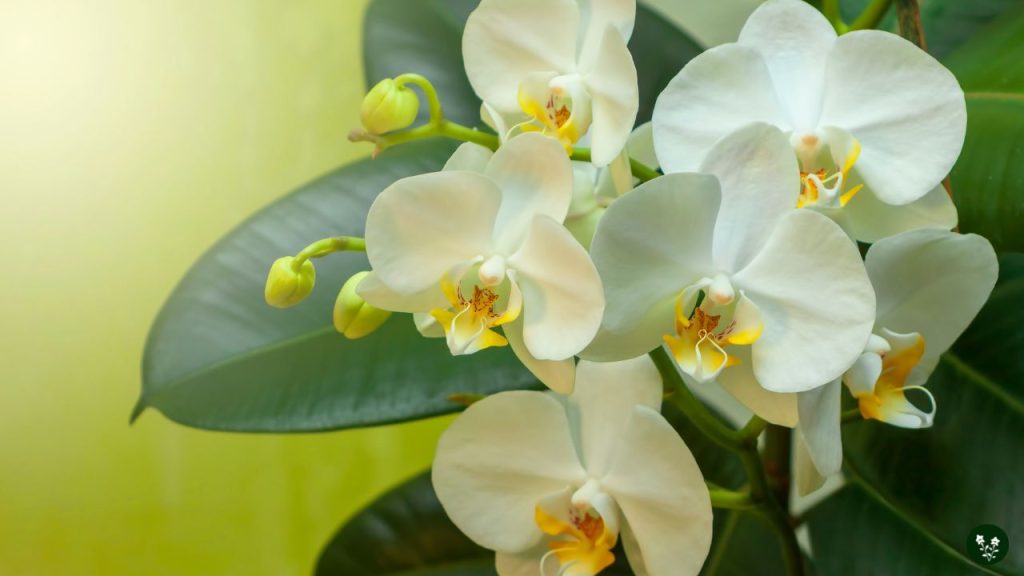
How to Identify and Treat Common Problems with Phalaenopsis Orchids
Phalaenopsis orchids are generally hardy plants, but they can still be susceptible to pests and diseases.
Here are some common problems you may encounter:
| Problem | Symptoms | Treatment |
|---|---|---|
| Scale | Small bumps on leaves, stems, or flowers; sticky residue on plant | Wipe down plant with rubbing alcohol or insecticidal soap |
| Mealybugs | White, cottony masses on leaves, stems, or flowers | Remove affected areas and spray with insecticidal soap |
| Spider mites | Fine webbing on leaves; yellow or brown spots on leaves | Spray plant with water and insecticidal soap; increase humidity |
| Root rot | Yellowing leaves; mushy or discolored roots | Repot plant in fresh, well-draining soil; trim away affected roots |
How to Prevent Common Problems from Occurring
The best way to deal with pests and diseases is to prevent them from occurring in the first place. Here are some tips:
- Keep your growing area clean and free of fallen leaves and debris, which can harbor pests and diseases.
- Inspect new plants before bringing them into your growing area to make sure they are healthy and pest-free.
- Avoid overwatering your orchids, as this can lead to root rot and other problems.
- Provide good air circulation and moderate humidity to prevent the buildup of pests and diseases.
- Use insecticidal soap or other natural remedies to treat pests and diseases, rather than harsh chemicals.
Conclusion
Phalaenopsis orchids are a beautiful addition to any home or garden. With the right care and attention, they can thrive for years, producing stunning blooms year after year.
Here are a few key takeaways to keep in mind when caring for your Phalaenopsis orchid:
- Watering: Phalaenopsis orchids prefer to be kept moist but not waterlogged. Water once a week, allowing the soil to dry out slightly between waterings.
- Lighting: These orchids prefer bright, indirect light. Avoid direct sunlight, which can scorch the leaves.
- Humidity: Phalaenopsis orchids thrive in humid environments. Consider using a humidifier or placing a tray of water near the plant to increase humidity levels.
- Fertilizing: Use a balanced orchid fertilizer once a month during the growing season (spring and summer).
- Repotting: Phalaenopsis orchids should be repotted every 1-2 years, or when the potting mix breaks down and becomes compacted.
By following these basic care guidelines, you can help ensure that your Phalaenopsis orchid stays healthy and produces beautiful blooms year after year.
Remember to keep an eye out for any signs of stress or disease, and address any issues promptly to keep your orchid thriving.
Leave a Reply